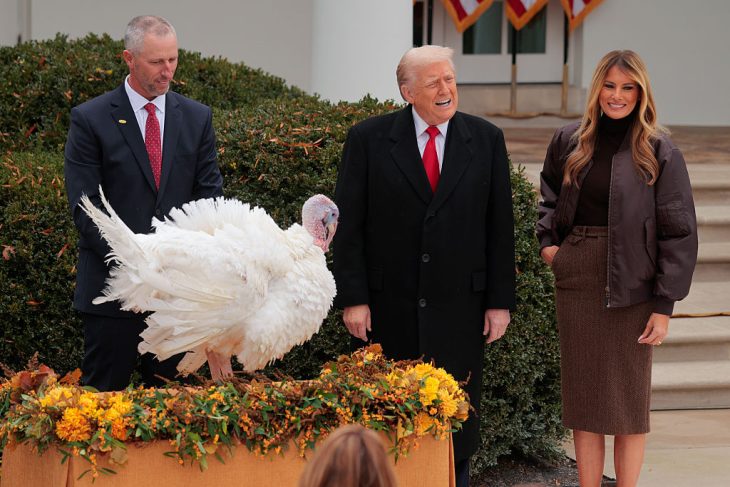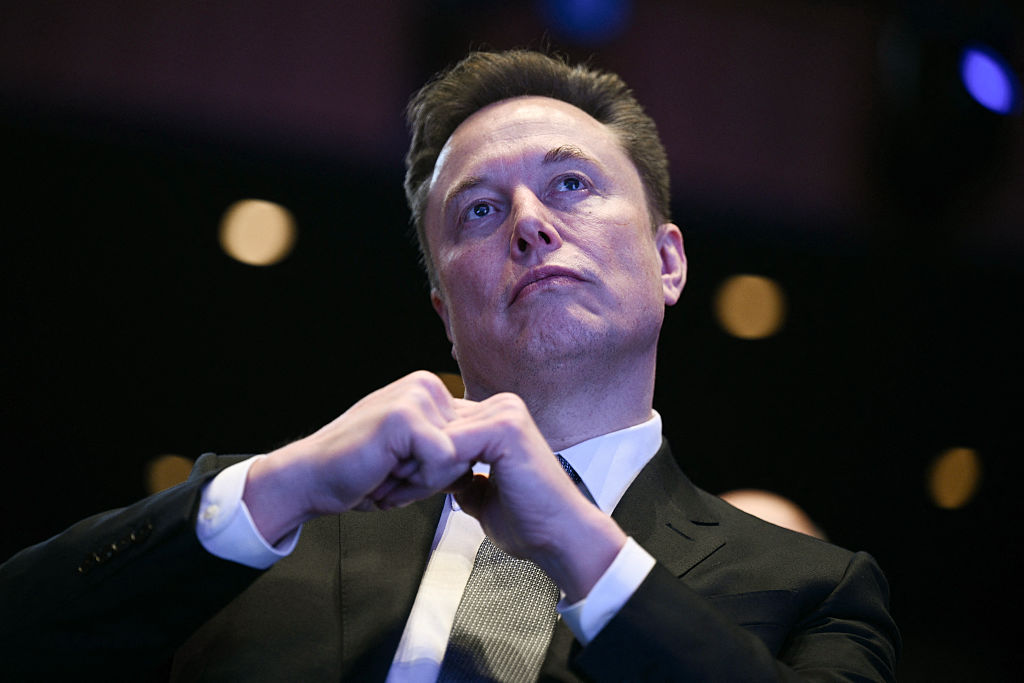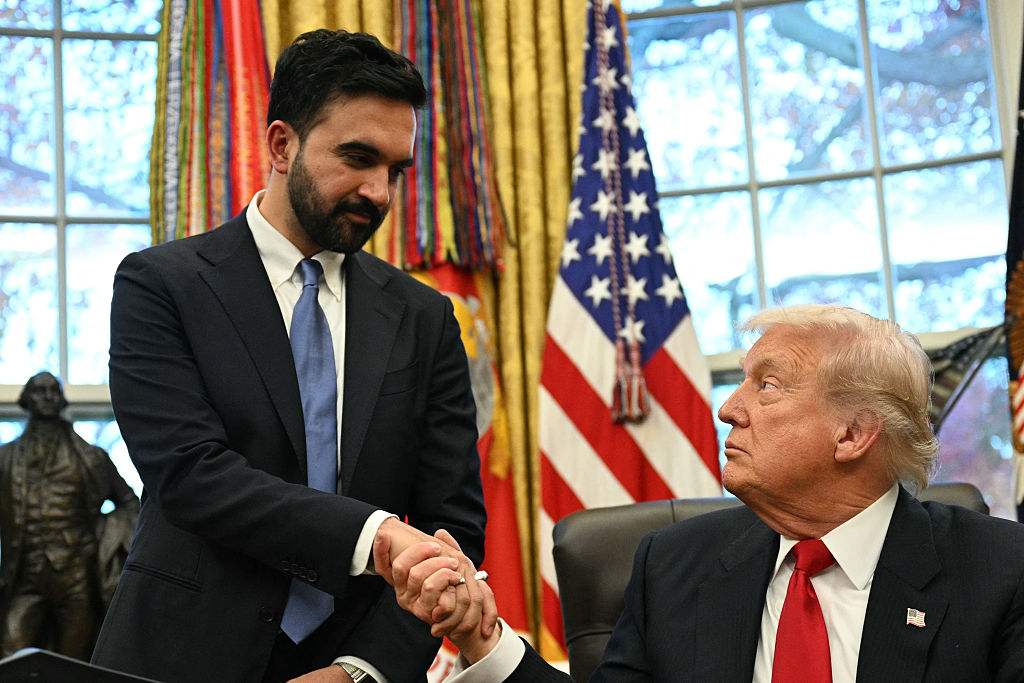In the past two months, the Harris-Walz campaign has texted five times asking me to join its door-knocking efforts in Virginia. I am a young woman living in Northern Virginia, so I am statistically likely to be a Democrat. But a data file of reasonable quality would also tell you that I have voted in every Republican primary since 2012, that I am a weekly Mass-attending Catholic and that I am married: three signs that I am probably not going to spend my weekend pounding the pavement for Kamala.
This is anecdotal evidence, but it suggests to me that contrary to mainstream media reports, the Harris-Walz campaign doesn’t have the most sophisticated ground-game operation.
“In 2020 the DNC actually wrote a press release bragging about appending cell phone numbers to the voter file. That’s like a baseball player bragging about showing up to the game with his glove,” a veteran GOP operative explained to me. “It’s something the Republican ecosystem has been doing since Obama’s second term. Democrats don’t have an institutionalized data infrastructure like we do with [the GOP’s centralized database] Data Trust. And Democrat data firms lack the sophistication to conduct quality microtargeting projects.”
A Democratic source notes to The Spectator that the party has VAN — the Voter Action Network — a grassroots voter file. But a lot of Democratic officials have not bought into microtargeting as a concept. That means they target demographics as opposed to individuals, and their voter-outreach efforts are much broader and less efficient than those on the Republican side.
To be fair, Harris is outraising and outspending Trump significantly. She rode a wave of new Democratic enthusiasm to raise $200 million the week she replaced President Joe Biden as the nominee and $320 million in July. A few mistargeted voters aren’t going to make or break her chance of victory.
However, there are more issues than just the Democrats’ data operation. Compared to the Trump campaign, the Democrats have a very distinct strategy in terms of who they’re trying to turn out to vote. Both operations have significant investment and staff in swing states: Wisconsin, Pennsylvania, Michigan, Arizona, North Carolina, Georgia and Nevada. A Harris campaign official told Politico in September that they have 238 offices and roughly 1,750 staff in battleground states. The Trump campaign is keeping its numbers closer, but reports say they have “hundreds” of staffers across about 300 offices in swing states.
The Harris-Walz campaign, though, is focusing on nontraditional means of whipping votes. They seem to be focused on flipping traditionally Republican voters and turning out disaffected Democrats. Nabbing the former group seems like a pipe dream; Harris is underperforming with the latter — key Democratic demographics, like Hispanics and black men — when compared to Joe Biden. Changing voters’ minds requires enormous investment in time and money and is a dangerous game to play when you haven’t secured your own base.
Harris has been bragging in press releases about endorsements from former and current Republicans, including Dick Cheney. The vice president thinks she can extrapolate this trend nationally. She is employing this strategy in North Carolina, where the New Yorker reports her campaign is “pouring money” into trying to make inroads with rural voters. “If you’re talking about a half point among white non-college voters, and you pick up a third of a point with black mobilization, and you slightly overperform with suburban voters, which is very likely, that’s winning and losing in North Carolina,” according to Michael Halle, a senior organizer in Obama’s campaigns in North Carolina. Republican organizers describe this plan as based in fantasy.
“You’re gonna go after rural Republicans, who Trump has owned and increased his vote share with in each subsequent election? This isn’t checkers, where each piece is valued the same and interchangeable, this is chess. The arrogance to assume that because you have camo hats in your campaign store that you can appeal to rural white Republicans is a perfect example of why she is losing,” the veteran Republican operative argued.
“Why is White Dudes for Harris even a thing?” said Trump political director James Blair. “Because they know that they can’t afford to lose white men as badly as it’s looking like they’re poised to. It’s exceedingly difficult for them to make that up somewhere else.”
In addition to rural white voters, the Harris campaign is trying to peel off other traditional Trump voters, like evangelicals and Catholics. The campaign launched its own Evangelicals for Harris coalition, mirroring efforts by the Trump campaign, and is running ads using video clips from the late evangelist preacher Billy Graham. They are hoping that attacking Trump’s character will convince faith-based voters to stay home or even flip to Harris.
Trump won monthly church attendees 56-40 in 2016 and weekly attendees 59-40 in 2020 and often hits 80-plus percent support with evangelicals. Are who regularly attend religious services going to abandon the guy who appointed the three Supreme Court justices who helped overturn Roe v. Wade? Although Trump has expressed a moderate position on abortion post-Roe, it’s unlikely any significant share of those voters will defect to a candidate who supports no restrictions on abortion.
Ralph Reed, founder of the Faith and Freedom Coalition, described Evangelicals for Harris as a “a waste of time and money.
“They’ve obviously got money to burn, so I guess it doesn’t really matter much,” Reed said when I spoke to him in late September. “But look at the most recent Pew Research poll, which is probably a couple of weeks old. It has Donald Trump leading among self-identified Born-Again evangelical voters by an 82 to 16 percent margin.”
Reed also noted that Trump is likely to perform even better with Catholics than he did in 2016 and 2020. “Catholic voters really matter, especially in places like Wisconsin, Michigan and Pennsylvania,” he argued. “You’ve got [the Democrats] trading a Mass-attending Catholic for a San Francisco liberal. And that doesn’t really resonate among faithful Catholics in places like western Pennsylvania or central Pennsylvania. I think it’s going to backfire.” Harris also did herself no favors by becoming the first major party candidate since Walter Mondale to skip the Al Smith Dinner, a venerable Catholic fundraiser, as Trump launched a new Catholics for Trump coalition.
The Harris campaign did not return a request for an interview on their ground-game strategy for this article.
The Trump campaign, meanwhile, is taking a different approach to 2024. Rather than explicitly trying to make inroads with minority voters while neglecting the white working class and new voter registration, which some critics accused them of doing to their own detriment in 2020, the Trump-Vance campaign is focusing the bulk of its efforts on turning out low- to mid-propensity voters. The idea is to provide a greater organizational structure to support the fact that Trump performed exceptionally well with disengaged voters in his 2016 upset victory.
“We’ve got a lot of additional focus in terms of frequency of contacts on lower- and mid-propensity voters that are either pro-Trump or anti-Harris,” Blair told The Spectator. “If you look at someone who votes in every election, or most of them for the last four cycles, it’s a close race. But if we move more of those people that are in that low- and mid-propensity category into the actual voting electorate, that’s giving us substantially better odds.”
Part of the Trump campaign’s efforts on this front are through a combination of a sophisticated microtargeting campaign to identify these voters, registration of those who have not voted before and mobilization tools to make sure these people are banking votes up to and through election day. Registration numbers in the late summer and early fall indicated that Republicans were outpacing Democrats in registering new voters in swing states.
In Arizona, for example, Republicans had 140,000 more registered voters than Democrats ahead of the election in 2020; by the end of July 2024, Republicans had a 260,000-voter advantage. Republicans have also significantly cut down Democratic advantages in North Carolina, Nevada and Pennsylvania. Take North Carolina: Democrats went from an approximately 380,000-voter advantage in 2020 to an approximately 125,000-voter advantage. The Democrats’ advantage in Pennsylvania was halved.
“We’ve seen these tremendous registration gains for Republicans. And if you look at polling data that’s out there in the public domain… people that are registered since 2020, or maybe they didn’t vote in 2020, which is largely new registrants, President Trump is winning by substantially higher margins,” Blair said.
Republicans know that they will not win in early voting, but they are hoping they can shave the Democrats’ edge heading into election day. Each voter contacted gets a full rundown of the different ways they can vote, and then they are contacted again to make sure they’re voting. The Trump campaign and the RNC also have tens of thousands of people dedicated to tackling potential voter fraud and have filed multiple lawsuits ensuring swing states have poll-worker parity.
This on-the-ground effort is being supplemented by outside groups like Elon Musk’s America PAC, Turnout for America, America First Works, Turning Point Action and the Faith & Freedom Coalition. The Faith & Freedom Coalition had 3.4 million doors knocked, 10 million get-out-the-vote calls, 30 million voter guides in 113,000 churches and 25 million get-out-the-vote texts by October.
“This is the largest and most ambitious and most far-reaching get-out-the vote effort by an organization outside the Republican Party in modern American politics,” Reed said. “My sense is that both the RNC and the Trump campaign are fully aware of our capacity and our capabilities, and they have a tremendous amount of confidence in our ability to execute this program. And without speaking for them, I think it is indispensable to being able to achieve victory on November 5.”
Faith & Freedom and Turning Point Action are following the Trump campaign’s strategy in targeting low- to mid-propensity voters and making sure they follow through and vote. Reed notes that the organization looks at updated voting data from secretaries of states every day: “As [individuals] vote, they drop out of our turnout universe. And then we just redirect all our resources to the people in our data set who are low-propensity voters who have not voted yet.”
Thanks to a recent change in election law, 501(c)(4) organizations are allowed to coordinate with campaigns on canvassing efforts. “We give [the Trump campaign] regular updates no less than weekly, sometimes more often, of how many doors we’ve hit in every battleground state and where,” Reed explained.
Some Republican operatives have raised red flags about the Trump campaign’s ground game and are wary of its supposed reliance on external groups. Turning Point Action has specifically been accused of failing to share data with Data Trust. Turning Point Action spokesperson Andrew Kolvet said the organization has hundreds of field staffers focused mostly on Arizona and Wisconsin and, although they built their own app to handle their data collection, are “trying to share data in other ways.” He also defends the Trump team’s willingness to outsource grassroots efforts to other groups.
“It’s actually a more efficient model because this is what the DNC has done for years… instead of the RNC hoarding resources and staff, they are outsourcing to groups who have an established presence and history [in these areas].”
Turning Point has headquarters in Arizona and Wisconsin. Through their efforts, they have identified 40,000 voters in Representative Andy Biggs’s district who voted for Trump in 2016 but didn’t vote in 2020, and 58,000 similar voters in Representative Paul Gosar’s district. Trump lost Arizona by just over 10,000 votes in 2020.
“We were floored by the preliminary data out of the Arizona primary because we saw precincts we were active in had 20 percent higher turnout than in 2020, and where we weren’t, the turnout was slightly down,” Kolvet said.
American voters will determine who has the better strategy: the Democrats, hammering together a unique coalition of various demographics, or the Republicans with their highly technological approach to whipping disaffected voters.
This article was originally published in The Spectator’s November 2024 World edition.























Leave a Reply